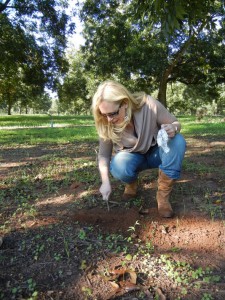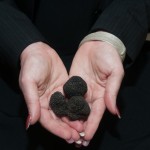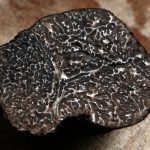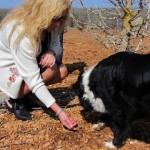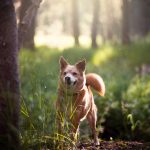Truffle Hunting: Where to Start?
18 Sep 2014, by in Truffle FavesWith prices that can go as high as $2,000 per pound, it’s almost impossible to think of another food item that’s more valuable than truffles. They have that earthy aroma and taste – the wonders of which have been spoken about throughout human history. The problem, though, has always been this: they grow underground, attached to the tree roots. But why the persistent interest?
Besides its characteristics, I say it’s the actual truffle experience. See, when you hunt for the likes of mushrooms, you get to take great pleasure in wandering the woods and finding what you’re looking for. And this isn’t as simple as it sounds – you show up and you locate something you can’t even see because it’s below ground. Needle in a haystack? Hardly, because your needle’s buried a few inches underground while your haystack is overwhelmingly vast!
That, right there, is hunting in its truest sense – with tracking, often drawn in to the process. But the question now is: where to start?
Clue Up
Truffle hunting is no easy pursuit; however, there are certain factors that make great signs that truffles are around:
Soil Type. Truffles like wet soil, and so hunting for them a week or two after heavy rains should yield in abundance. If the area happens to be dotted with mushrooms, then wait for them to collapse before beginning your search.
Trees. Growing in a strange symbiotic relationship with trees, it’s imperative that certain ectomycorrhizal ones are present: beech is king, but you may also go for firs, oaks, pines, hickories, and eucalyptus as guides.
Burnt Areas. Truffles emit volatile organic compounds (VOCs), which suppress any sign of growth around their respective trees. This results in impressions of burnt (or brûlée, to some) areas – and yes, you would know because nothing really grows there!
Animals. When it comes to sending out spores, animals are truffles’ best friends. They dig them up, chow them down like nobody’s business, and then dump the spores somewhere else. Search for fresh diggings and you might just find yourself in the vicinity of a buried fancy fungi.
Sniffing. Truffles have a strong, pungent scent. Your best bet? Familiarize yourself with it. Hone your sense of smell by taking some truffle oil with you. Keep sniffing until you get in the mood.
Get Hunting
Growing underground and attached to the roots of trees, truffles sure take a lot of time and effort to harvest. Hunters traditionally used pigs; however, truffle duties were passed to dogs later on for three reasons. One, they have more stamina than an average pig. Two, they’re a whole lot easier to train. And three, they’re less likely to eat their truffle finds. You don’t want to tussle with a truffle-hungry hog now, do you?
There’s always that inexplicable feeling of excitement when finding your very first truffle. And yes, truffle hunting requires serious observational skills, heaps of patience, and interaction with the natural world. Then again, you get to delight in your culinary treat – and not just any treat, but one that will have you eating like a king.
Truffle noob? That’s all right — you can watch the video below to learn some truffle basics! Now if you’re looking to get creative with those fresh truffles, then feel free to check out my recipes! Browse through some of my blog, too, or share the truffle hunting infographic below to spread truffle knowledge. Happy cooking/reading!


- Supplying in season truffles
- Working with Chefs and Staffs
- Pairing Wines and Recipes
- Special Appearances & Presentations



